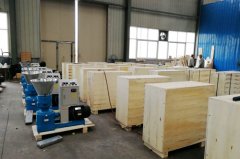How to make biodiesel from Algae-none food resource
As we all know, one big problem of developing the bio-energy industry is the reduce of food resource and cultivated land. Among all of the none-food oil crops, algae are considered to be the main bio-energy oil crop which has broad development prospect in the future. Now biodiesel machines of algae are being researched and developed in many countries. Algae’s characteristics are: high fat content, strong environmental adaptability, short growth cycle and high yield. Algae are usually divided into large algae (kelp, seaweed, wakame) and microalgae by size, microalgae is used in the bio-fuel production.
Photosynthetic reactor, closed loop system and open water are 3 main methods to realize the algae cultivation. The open water means make the algae grow in the lake, pool, etc, this method is very easy to realize with very low cost while has the disadvantages of causing pollution, takes large areas, unstable production volume (water conditions are not adjustable); closed loop system means the cycling algae-containing liquid in a closed artificial loop, carbon dioxide is supplied for the algae metabolism. Photosynthetic reactor is transparent pipes filled with waste gas and water from factories, algae can absorb the carbon dioxide and form substance for biodiesel production. The algae have much higher fuel production efficiency than the food crops, unlike the other oil crops, it’s growth rate is counted by hour. It is being said that if all the United states’ biodiesel is produced by algae, 56% of carbon dioxide from power plant would be reduced in the biodiesel production.




